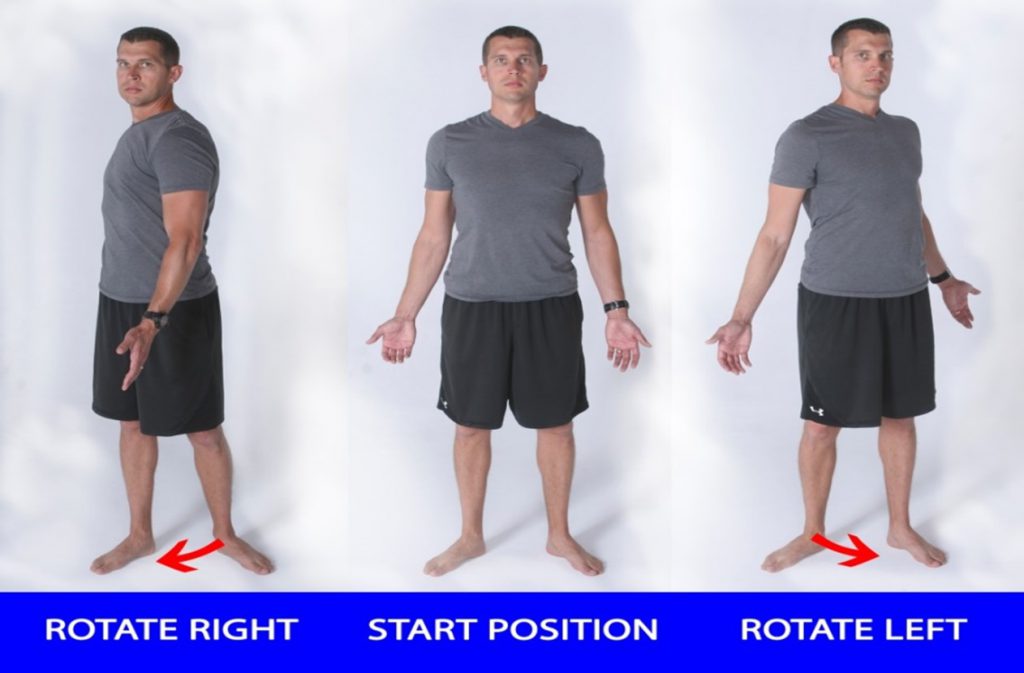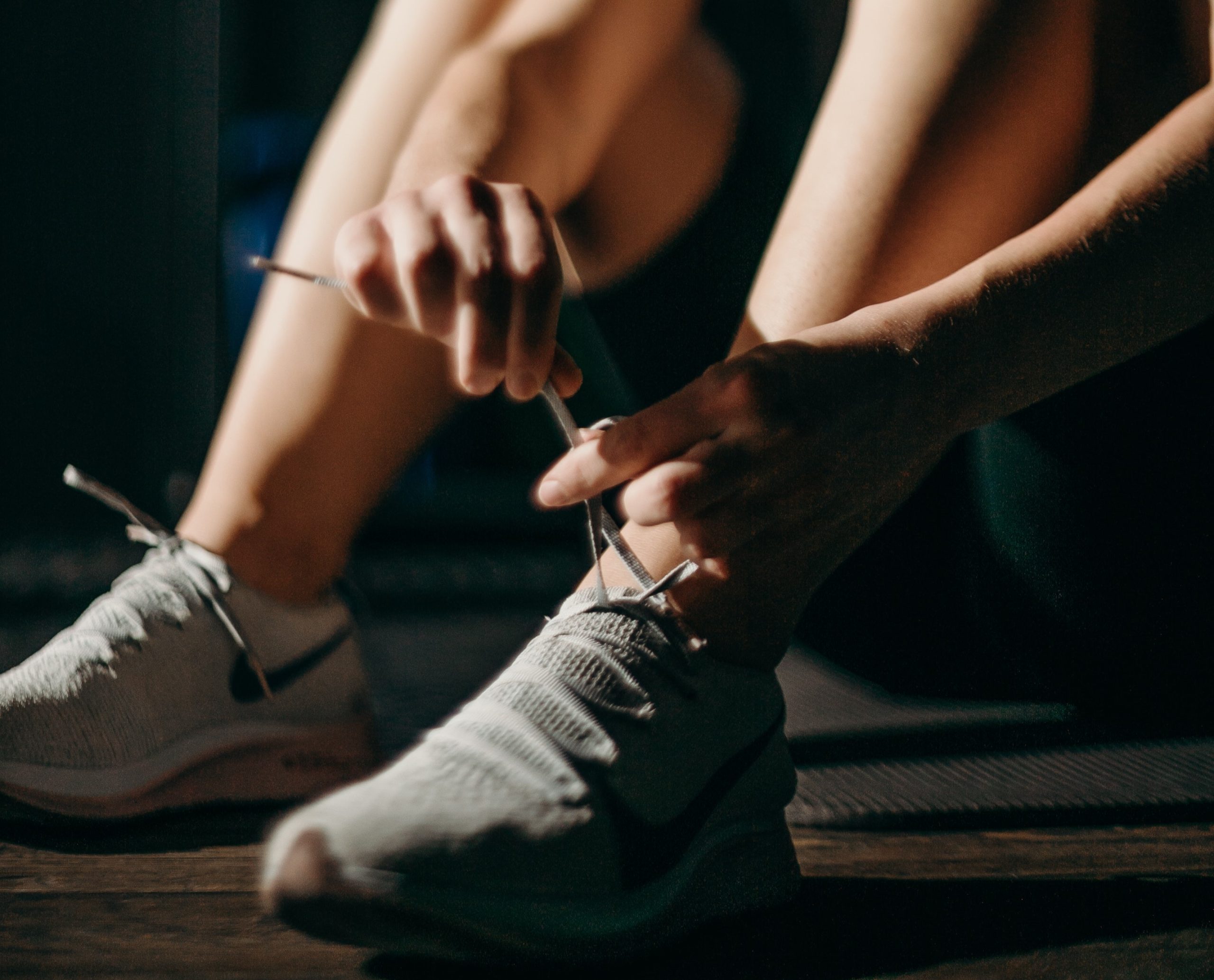Justin Price is here to help you choose the right shoes for your feet.
Shopping for workout shoes these days can be a very confusing and time-consuming process. There are literally hundreds of different types of shoe to choose from and they all vary in amount of support, heel height, width, flexibility, shape of the sole, type of material and more! Then there are all the conflicting opinions surrounding the purchase of footwear. Some people insist you need orthotics and supportive shoes to help prevent overpronation (i.e., when the arch of the foot collapses), while others tout the benefits of minimalist and barefoot-type shoes to strengthen the foot so it doesn’t collapse. All this differing information can be overwhelming and make you feel like you are not equipped to make good shoe-buying decisions. When you finally do bite the bullet and pick a pair, you never feel 100% confident you have made the right choice and wonder whether or not your shoes are to blame for your aches and pains. Fortunately, you no longer need to feel so powerless when it comes to buying the right shoes. Understanding the way your feet/ankles work (in conjunction with the rest of your body) can help you narrow down your shoe choices and make good decisions about footwear based on your own individual body characteristics.
The importance of foot and ankle mobility
The level of mobility in your feet and ankles is one of the biggest considerations when it comes to choosing the right footwear. The simple act of wearing shoes, especially if they are too tight, have heels or are badly designed, can restrict movement and lead to immobility of both the foot and ankle complex1,2. This immobility can be further compounded by prolonged periods of sitting (e.g., when driving, at a computer, watching television or playing video games) because your feet and ankles are inactive most of the day. So how exactly does immobility in the feet and ankles affect your footwear choices?
When you are walking and/or running, you need to transfer your weight from your right leg to your left leg and vice versa. To do this correctly, your foot should roll in from right to left (and left to right) as it makes contact with the ground.3 As your foot rolls in (i.e., pronates), your ankle should also roll in because it needs to follow the foot. This rolling in motion of the ankle causes your lower and upper leg to roll inward as well. As you may know, the end of the thighbone in the upper leg forms your hip socket (where your leg attaches to your pelvis).4 As such, mobility in the foot and ankle helps promote mobility in your hips. This, in turn, ensures your pelvis is positioned correctly to provide a good base of support for your spine. This chain reaction from the foot upward helps facilitate correct body mechanics all the way through the torso and into the shoulder girdle, head and neck.5 Hence, if you lack mobility in the foot and ankle and decide to buy minimalist shoes that encourage movement (or any shoe with a flexible sole and no support), the stress generated by the increased movement will not be dissipated by your feet and ankles, but will instead be transferred up to the structures in the rest of your body. This can lead to pain in your knees, hips, lower back, shoulders and neck.
Foot and ankle mobility and footwear choices
Knowing how to assess the mobility of your feet and ankles before you buy a pair of shoes is of utmost importance. If your assessment reveals you have good range of motion in your feet and ankles, you can encourage these structures to get stronger by choosing and gradually adapting to minimalist and/or barefoot shoes. If you determine that you lack foot and ankle mobility, it might be better to choose more supportive shoes (and/or orthotics) in the short term, while you do corrective exercises to help loosen up those areas so you can eventually progress to less supportive shoe types in the future.
Mobility assessment for the feet and ankles: Toes out torso rotations
To help you evaluate the current mobility of your feet and ankles before shopping for your next pair of shoes, try out the easy self-assessment below. This assessment, which is also great for clients, evaluates the ability of the foot and ankle to roll inward towards the midline of the body.
How to perform
Stand with your feet slightly wider than hip-width apart and your feet turned out to about 45°. Stand upright with both arms lifted away from the sides of your body. Now swing both arms to the right as you rotate your body to the right. It is OK if the left knee bends slightly as you turn, but do not slide your foot. Cue in on the sensation you are feeling in your left foot and ankle as you rotate to the right (see image below). Ideally, your left foot and ankle should roll in easily to the right (i.e., collapse towards the midline of your body) as the arms and torso rotate. Then swing both arms to your left side and rotate to the left (allowing the right knee to bend slightly and cuing in on the sensation you feel in the right ankle and foot). Finally, rotate back and forth from left to right until you get a feeling for how your feet and ankles move towards the midline of your body as you rotate. Evaluate if there is any difference in the movement ability between the two feet/ankles and make a mental note of what you feel. When assessing a client, if there is no obvious visual difference in the mobility observed by you between the two sides, ask them for their sensory feedback to assist with an accurate assessment.

Foot and ankle assessment: Toes out torso rotations
Additional assessment considerations
- This assessment is best performed in bare feet on a non-slip surface such as a rubber mat.
- If your ankle(s) makes a ‘popping’ noise while performing this assessment, that is perfectly normal. It means the ankle joint is naturally adjusting and you will have more mobility as a result.
- If your knee(s) feel uncomfortable when performing this movement, simply turn your feet out less. This will take stress off the knees.
- This assessment can also be used as a warm-up exercise to help promote mobility of the foot and ankle before exercise and/or sports. However, it is important to warm up the foot and calf muscles first. You can do this by using self-massage techniques such as rolling a tennis ball under the foot and massaging the calf muscles.
Evaluating how your feet and ankles are working (or not working, as the case may be) before heading out to the shoe shop can help you make better footwear choices to eliminate pain, prevent injury and improve performance.
Have you read Justin Price’s blog on ‘
References
- Price J (2018), The BioMechanics Method for Corrective Exercise,Champaign, IL: Human Kinetics.
- Price J and Bratcher M (2019), The BioMechanics Method Corrective Exercise Specialist Certification program, 2nd Edition, San Diego, CA: The BioMechanics Press.
- Kendall FP et al (2005), Muscles Testing and Function with Posture and Pain (5th Ed), Baltimore, MD: Lippincott Williams & Wilkins.
- Gray H (1995), Gray’s Anatomy, New York: Barnes & Noble Books.
- Myers T (2001), Anatomy trains: Myofascial meridians for manual and movement therapists, Edinburgh, Churchill Livingstone.








